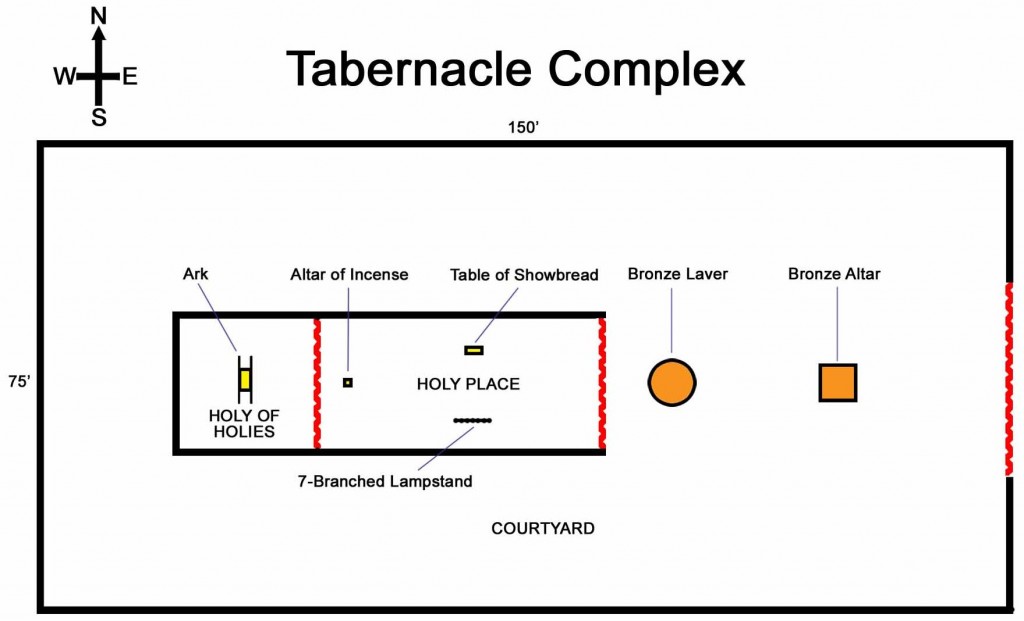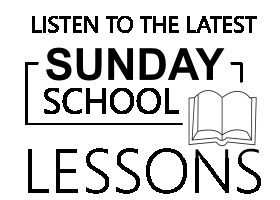 Moses is still on top of the mountain getting instructions from God on what is to be in the Tabernacle, the Old-Covenant’s predecessor of the Temple.
Moses is still on top of the mountain getting instructions from God on what is to be in the Tabernacle, the Old-Covenant’s predecessor of the Temple.
So far, we’ve learned about the Ark of the Covenant and the Table of Presence. Today, we look at the lampstand, which was in the same area of the Tabernacle as the Table of Presence.
Another Look at the Table/Bread of Presence
Remember that the Apostle Peter said that all Christians in the New Covenant are temples of the Holy Spirit, showing how the primary dwelling place of the Holy Spirit had moved from the Temple in the Old Covenant to within each Christian in the New.
Knowing that each Christian is now a temple/tabernacle, then the Bread of the Presence could also be pointing forward to another reality for each Christian within the New Covenant.
The Lampstand
Read Exodus 25:31-39
The only light within the tabernacle came from the lampstand, which consisted of a central shaft, with three branches extending outward and upward from each side, providing a place for seven lamps. It was in the shape of a stylized almond tree. God said that Aaron and his sons were to “keep the lamps lit in the LORD’s presence from evening until morning” and that was to be “a statute forever throughout their generations by the people of Israel” (Exodus 27:21).
– Besides being the only light in the Tabernacle, what was the purpose for keeping the lamps lighted?
– That the Lampstand was not in the Holy of Holies testifies to what?
John 1:4-5: In him [Jesus] there was life, and that life was the light of all people. The light shines in the darkness, and the darkness has never extinguished it.
Revelation 1:12-13: I [the Apostle John] turned to see the voice that was speaking to me. When I turned I saw seven golden lampstands, and someone among the lampstands who was like the Son of Man [Jesus] dressed in a long robe and with a golden sash around His chest.
Although the imagery is symbolic in Revelation, notice that John sees the presence of Christ with the lampstands.
The lamps were always burning in the Tabernacle where the Bread of the Presence was located. God did not command for the lamps to burn in the Holy of Holies, where His Shekinah was present.
In the New Covenant, we find a fuller explanation of how Jesus is the light and how light is in His presence. Although we only have information in part, what does all this point to as to which person of God’s presence is connected to the Bread of the Presence?
– Discuss: What is the purpose of the lamps we use, within the New Covenant, in our sanctuary?
Excursus: Worship Reflecting a God-Given Pattern
Read Exodus 25:40
This one verse lays out an important principle for God’s people and how we are to meet Him in worship. A more-literal translation of the verse from the Hebrew reads: “See to it that you do according to the pattern that you were shown on the mountain.” The Greek Old Testament Septuagint is virtually identical but instead of “pattern,” it uses “example.”
– What principle does this verse lay out for us as God’s people?
Scripture repeats this idea several times. Concerning the Temple, which replaced the Tabernacle, we find from the Old-Testament Apocrypha, Wisdom 9:8:
You [God] gave me [Solomon] the command to build a temple on your holy mountain and an altar in the city that is your dwelling place, a copy of your holy tabernacle that you established from the beginning.
Within the New Covenant, Stephen quoted that verse before the High Priest (Acts 7:44). The book of Hebrews takes that verse and shows that it still applies, but in its fuller and fulfilled context. After quoting that verse, Hebrews says:
But now, Jesus has received a superior priestly service, since the covenant that he mediates [the New Covenant] is also better and is established on better promises. [Hebrews 8:6]
Yet, the pattern that God gave to Moses was a “a pattern, a shadow, of what is in heaven” (Hebrews 8:5). Through that one verse, and the other quotations of that verse and Scripture’s further expounding of it, God shows that we are not to worship Him in the way that we choose. Instead, He gives us a pattern, a shadow, of heavenly worship that we are to follow.
Our upcoming chapters in Exodus, chapters 26 through 30, will deal with the design of the tabernacle, the altar, and the outer court, the priests’ vestments and their consecration, and instructions for daily offerings.
So we can see, from the beginning, that God’s people worship in a structured and ordered way–that is, liturgically. And as High Priest, our Lord Jesus Christ serves at heaven’s altar in the true Tabernacle after which the earthly Tabernacle and Temple were patterned (Hebrews 8:1-2).
In the Old Covenant, to worship properly meant keeping the pattern of worship that Yahweh revealed to Moses on Mt. Sinai. In the New Covenant, Jesus said:
Do not think that I came to abolish the Law or the Prophets. I did not come to abolish, but to fulfill. For I assure you: Until heaven and earth disappear, neither the smallest letter nor even the smallest stroke of a pen will disappear from the Law until everything has been accomplished. [Matthew 5:17-18]
Jesus didn’t come to abolish the Old Covenant, but to fulfill it. Therefore, how we worship today is not a matter of preference (or adiaphora) but of still following God’s original pattern in its New-Covenant fulfillment and form!
Here is how many today in our culture approach worship.
Here is how worship should be patterned.
In later lessons, we will even look at church architecture and how that reflects the pattern God gave to Moses, of course from a New-Covenant perspective.
Our Heavenly Citizenship
Philippians 3:20: Our citizenship is in heaven.
– As God’s people, where is our true citizenship?
– If we are citizens of heaven, then what should primarily shape our worship of God?
– If we are citizens of heaven, how does that truth inform what we do in worship, what we sing, and even what we display in the church sanctuary?
Heavenly Worship
In Isaiah 6:1-8, Isaiah briefly experienced heaven’s liturgy. Revelation, chapters 4 and 5, records the Apostle John’s vision of heaven’s liturgy, where he saw the crucified, resurrected, and ascended Jesus. There, the saints in heaven were praising Him and falling down (pipto) and being prostrate (proskeneuo) before Him in worship, and incense being burned before Him.
– How can the Apostle John’s vision of heavenly worship shape how we worship?
– How can our worship “style” help inform and teach us that our worship is a reflection of what takes place in heaven?
It’s The Lord’s Liturgy
We also see, from Scripture, that the earliest Christians had a deep sense that when they worshiped, they were using the Lord’s liturgy!
Acts 13:2: While they [the church at Antioch] were worshiping the Lord and fasting, the Holy Spirit said, “Set apart Barnabas and Saul for the work to which I have called them.”
“While they were worshiping the Lord” is more literally, “While they were liturgizing to the Lord.” The participle, liturgizing, means “to perform liturgical acts.” To translate this in a way that doesn’t do violence to the English language would be: “While they performed the liturgy of the Lord.”
This reveals that the early Church recognized that their worship forms were not their own but the Lord’s. After all, the church in Antioch did not originate liturgical worship; its roots were in ancient Israel, of course with the liturgy being shaped by Jesus as the fulfillment of the Old Covenant and the Messiah to whom the Old Covenant pointed.
In the same way that Old Covenant foreshadowings (types) pointed forward to their fulfillment (antitypes) in the New Covenant (example: the great flood was a foreshadowing of baptism, 1 Peter 3:18-21), so also is it with worship. The Old Covenant’s liturgical worship was fulfilled in the greater reality of the New Covenant’s liturgical worship.
With Whom Do We Worship?
But more takes place in our worship than simply being a “copy and shadow” of what takes place in heaven.
Hebrews 12:23: You [the saints on earth] have come to Mount Zion, to the city of the living God, the heavenly Jerusalem. You have come to countless angels in festive gathering, to the church of the Firstborn, whose names are written in heaven. You have come to God, the Judge of all, and to the spirits of the righteous made perfect.
– Besides the people with whom we gather, are we worshipping with others? Who are they?
– To whom does Scripture refer when it mentions the “spirits of the righteous made perfect”?
– How does this show that you can’t worship God according to His pattern, at home, in private?
Referring to the Lord’s Supper (which Jesus called “the New Covenant”), the Apostle Paul tells us that the bread and the cup are not merely symbols, but a participation in the body and blood of Christ (1 Corinthians 10:16). In the Old Covenant, God came down to His people. However, in the New Covenant, God lifts us up and brings us into contact with the heavenly and eternal realities that the Old Covenant merely pictured.
When you come to the Divine Service, you are spiritually brought into heavenly realities. Jesus Christ is actually present and with Him are all the angels, archangels, saints, apostles, prophets, and martyrs of the Church. With them, we adore our Father in heaven and worship as the one Body of Christ.





